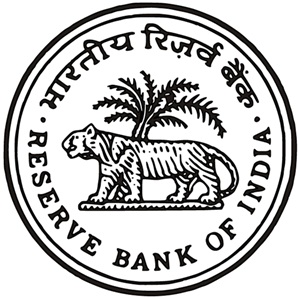The Reserve Bank of India (RBI) on Friday released a concept note on Central Bank Digital Currency (CBDC) for India.

RBI defines CBDC as legal tender issued by a central bank in a digital form. It is akin to sovereign paper currency but takes a different form, exchangeable at par with the existing currency and shall be accepted as a medium of payment, legal tender and a safe store of value. CBDCs would appear as liability on a central bank’s balance sheet.
Bank for International Settlement has laid down “foundational principles” and “core features” of a CBDC, to guide exploration and support public policy objectives, as per the need of existing mandate of central banks.
The CBDC is an extension of present state-of-the-art payment systems that are affordable, accessible, convenient, efficient, safe, secure and available 24x7x365 days a year. This has been backed by the creation of robust round-the-clock electronic payment systems such as Real Time Gross Settlement (RTGS) and National Electronic Funds Transfer (NEFT) that has facilitated seamless real time or near real time fund transfers. In addition, the launch of Immediate Payment Service (IMPS) and Unified Payments Interface (UPI) for instant payment settlement, the introduction of mobile based payment systems such as Bharat Bill Payment System (BBPS), and National Electronic Toll Collection (NETC) to facilitate electronic toll payments have been the defining moments that has transformed the payments ecosystem of the country and attracted international recognition says the concept note.
The convenience of these payment systems ensured rapid acceptance as they provided consumers an alternative to the use of cash and paper for making payments. The facilitation of non-bank FinTech firms in the payment ecosystem as PPI issuers, Bharat Bill Payment Operating Units (BBPOUs) and third-party application providers in the UPI platform have furthered the adoption of digital payments in the country. The Reserve Bank has all along played the role of a catalyst towards achieving its public policy objective of developing and promoting a safe, secure, sound, efficient and interoperable payment system.
Further, with the advent of cutting-edge technologies, digitalisation of money is the next milestone in the monetary history.
RBI has been exploring the pros and cons of introduction of CBDCs for some time and is currently engaged in working towards a phased implementation strategy, going step by step through various stages of pilots followed by the final launch, and simultaneously examining use cases for the issuance of its own CBDC (Digital Rupee (eRupee)), with minimal or no disruption to the financial system.
Key Advantages:
- CBDC, being a sovereign currency, holds unique advantages of central bank money viz. trust, safety, liquidity, settlement finality and integrity;
- It would help reduce operational costs involved in physical cash management, foster financial inclusion, bring resilience, efficiency, and innovation in payments system, add efficiency to the settlement system, and boost innovation in cross-border payments space;
- CBDC would facilitate public uses that any private virtual currencies can provide, without the associated risks;
- The use of offline feature in CBDC would also be beneficial in remote locations and offer availability and resilience benefits when electrical power or mobile network is not available.
Private virtual currencies sit at substantial odds to the historical concept of money. They are not commodities or claims on commodities as they have no intrinsic value. The rapid mushrooming of private cryptocurrencies in the last few years has attempted to challenge the fundamental notion of money as we know it. Claiming the benefits of de-centralisation, cryptocurrencies are being hailed as innovation that would usher in de-centralised finance and disrupt the traditional financial system. However, the inherent design of cryptocurrencies is more geared to bypass the established and regulated intermediation and control arrangements that play a crucial role of ensuring integrity and stability of monetary and financial eco-system.
Further, a wider proliferation of cryptocurrencies has the potential to diminish monetary authorities’ potential to determine and regulate monetary policy and the monetary system of the country which could pose serious challenge to the stability of the financial system of the country. In this context, it is the responsibility of central bank to provide its citizens with a risk free central bank digital money which will provide the users the same experience of dealing in currency in digital form, without any risks associated with private cryptocurrencies.
CBDCs will provide the public with benefits of virtual currencies while ensuring consumer protection by avoiding the damaging social and economic consequences of private virtual currencies.
The purpose behind the issue of this concept note is to create awareness about CBDCs in general and the planned features of the Digital Rupee (eRupee), in particular, the release adds.






















